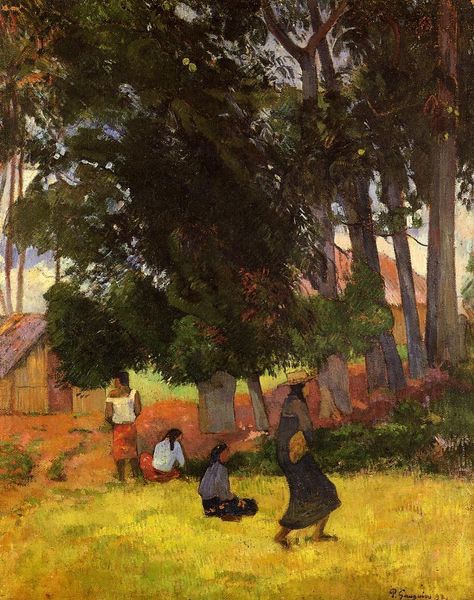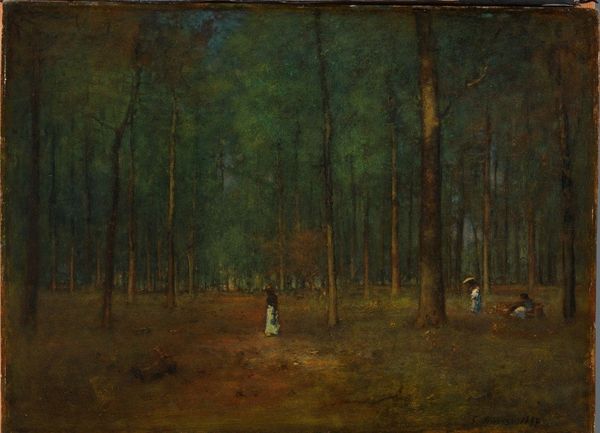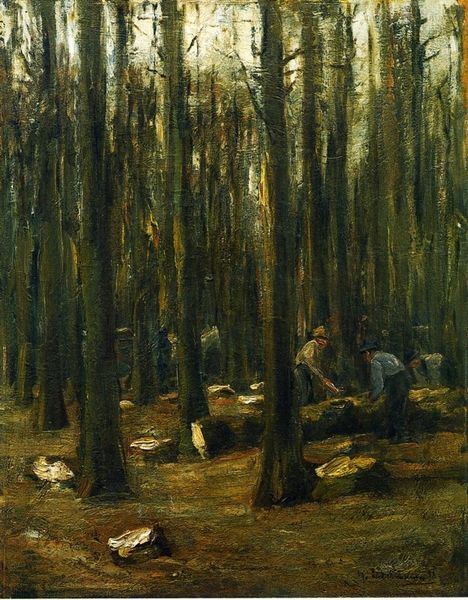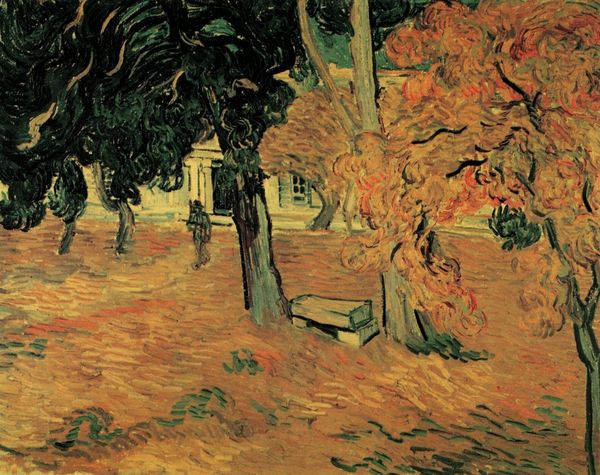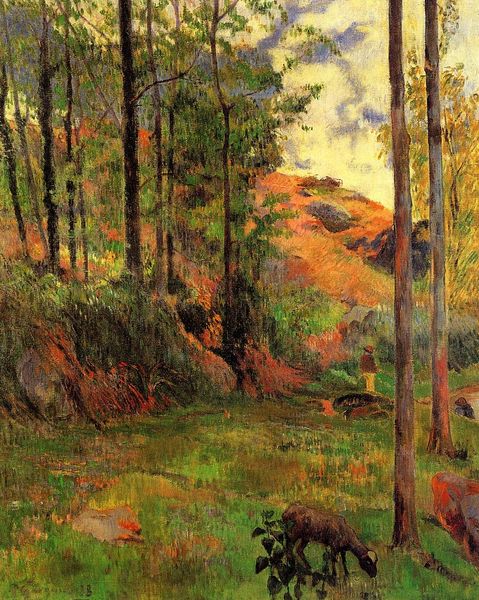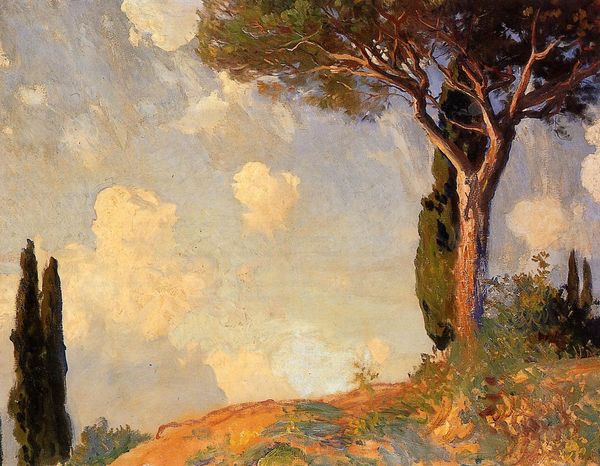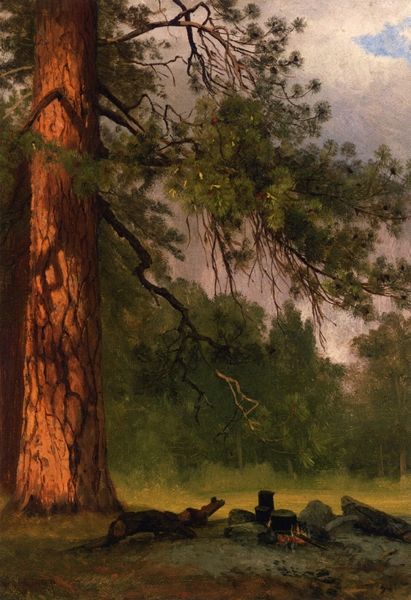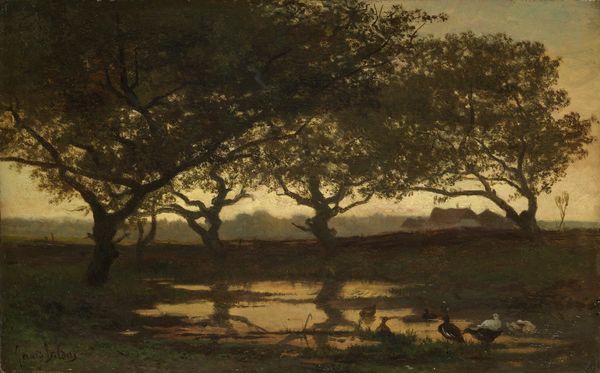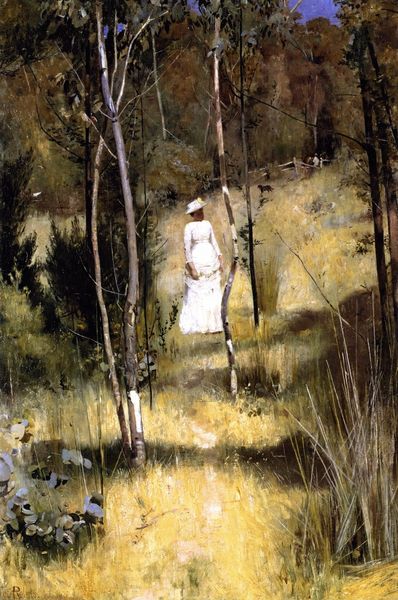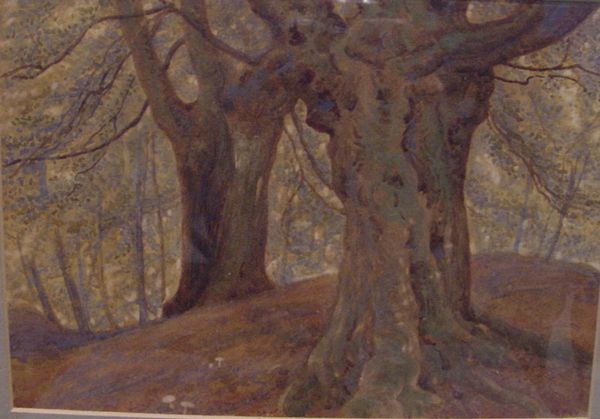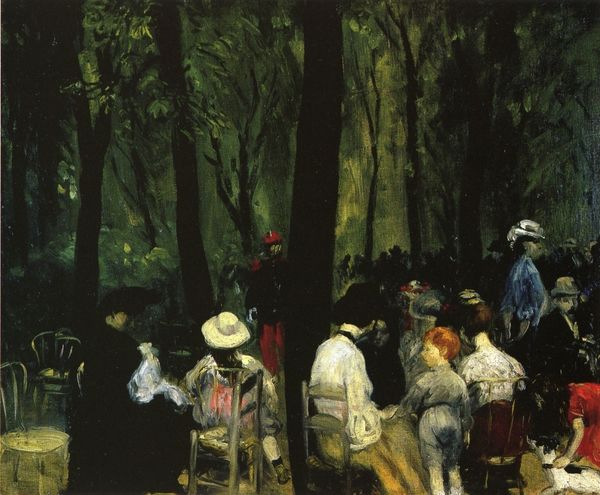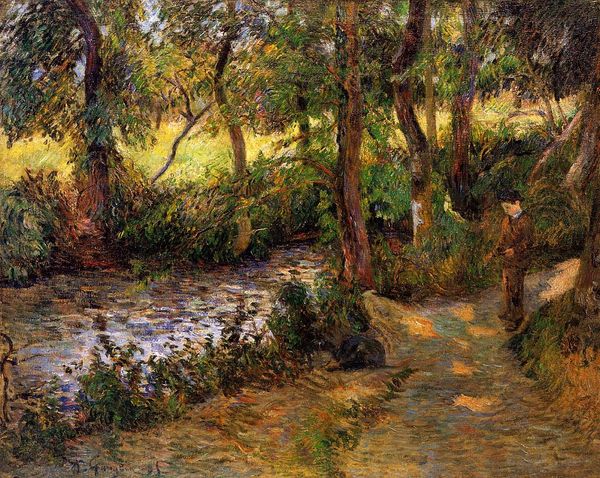
painting, plein-air, oil-paint, impasto
#
portrait
#
tree
#
painting
#
plein-air
#
oil-paint
#
landscape
#
impressionist landscape
#
figuration
#
impasto
#
forest
#
plant
#
post-impressionism
Dimensions: 39 x 59 cm
Copyright: Public domain
Art Historian: Welcome. Before us hangs "Girl in White in the Woods," an 1882 oil painting by Vincent van Gogh. It resides here at the Kröller-Müller Museum. Curator: The palette is immediately striking! Browns and oranges dominate. A single figure, presumably the 'Girl in White,' stands at the forest's edge, creating a dynamic contrast with the densely packed trees. There’s a peculiar glow, a somber sort of energy about it all. Art Historian: Van Gogh painted this while in The Hague, during a period when he was struggling financially and emotionally. His artistic development was greatly influenced by his mentor, Anton Mauve, who introduced him to painting "en plein air" which means 'in open air.' We believe Mauve possibly assisted with the female figure here. This artwork serves as one of Van Gogh's earliest forays into Impressionistic landscape. Curator: Yes, but I find it intriguing how the impasto—the thick application of paint—draws the eye across the canvas. The textures seem to evoke the rawness of nature. Consider the brushstrokes. Notice how they animate the woodland floor with such vigorous movement. But the placement of the girl is what perplexes me. Is she part of this landscape, or strangely apart from it? Art Historian: Some historians argue she represents societal expectations pressing on young women at the time, placed against nature's raw freedom, although no known documented claim validates it. What is visible in this image are elements he absorbed from The Hague School; this influence appears through a subdued palette mirroring much of Dutch art. Van Gogh intended to express feelings associated within nature instead presenting beauty alone. Curator: While such social context is fascinating, purely visually she creates tonal disruption. I disagree the tones harmonize seamlessly; those whites clash delicately beside saturated hues causing imbalance—or intended emotional resonance beyond color theory itself, what’s your perception perhaps? Art Historian: True. Yet her positioning, deliberately contrasted against earthy shades invites inquiry not simple appreciation: Is there intention within how Van Gogh wishes others visualize contemporary lives through environment. In the context for the Dutch Art society during that century one does see elements representing social values as well landscape depictions within everyday themes; his integration makes work invaluable given limited success experienced until well after life’s close! Curator: Van Gogh pushes conventional art parameters of perception toward emotion. By emphasizing texture together compositional balance he challenges observers even present day! It feels intensely immediate something to be not objectively admired something one feels; simply unique from art norms generally seen back now! Art Historian: Perhaps… in understanding struggles the painting embodies becomes both portrait environment… it prompts introspective recognition despite passage after one! A relevant work despite shifts occurring culture technology. Curator: Perhaps; what lingers afterward is that unforgettable interplay with color which shapes how viewer interfaces intrinsically regardless further insight history may ever furnish.
Comments
No comments
Be the first to comment and join the conversation on the ultimate creative platform.
